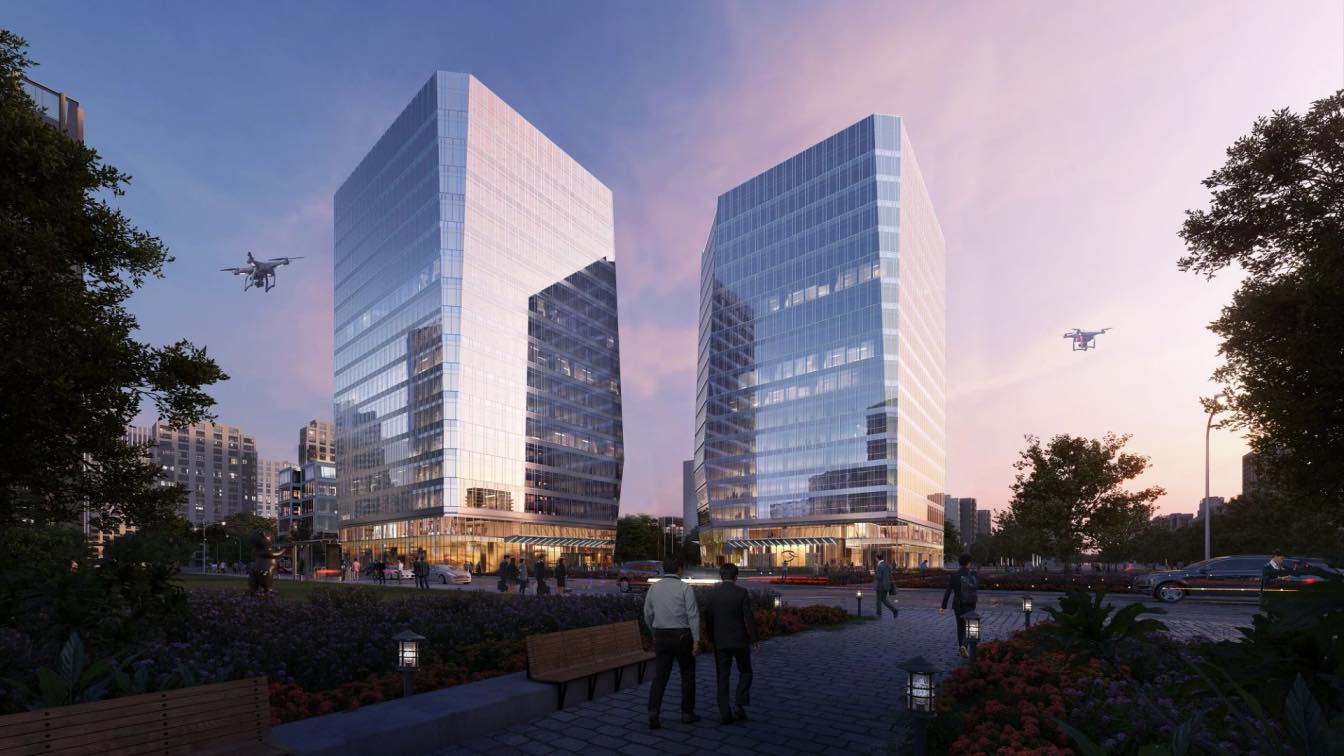Lithuanian Airports today announced that Zaha Hadid Architects (ZHA) has been selected as the winner of the international architectural competition to design the new arrivals terminal at Vilnius Airport. The project represents a significant milestone in the airport's long-term strategic plan to accommodate predicted growth in passenger demand and strengthen Lithuania's position as a leading gateway in the Baltic region.
"The arrivals terminal of Vilnius Airport requires updating – it has long since ceased to meet today's needs or the airport’s future capacity and vision. As the gateway to Lithuania, the terminal creates the first impression for everyone arriving into the country. The very high quality of ideas in the design competition proposed the most modern, convenient solutions that can adapt to the airport’s future requirements," said Eugenijus Sabutis, Lithuania's Minister of Transport and Communications.
Currently operating at capacity, Lithuanian Airports are developing the new arrivals terminal at Vilnius Airport as a strategically important project for the country's aviation and economic growth. Supporting the recent completion of the airport’s departure terminal, the new arrivals terminal will enable the airport to serve up to 10.6 million passengers annually, meeting continued growth in demand for air travel.
"For us, functionality and the highest level of passenger experience are most important. The winning proposal combines these key requirements with unique architectural solutions that connect the airport’s contemporary and future infrastructure with the cultural identity of Lithuania. We consider the terminal to be an excellent business card for all visitors," said Simonas Bartkus, CEO of Lithuanian Airports.
ZHA's design draws from Lithuanian cultural heritage, incorporating traditional motifs and art forms within a contemporary architectural language. The terminal's modular geometry originates from the rhombus, a triangular shape that holds significant meaning in Baltic folklore.

"The design presents a mature architectural solution for a public infrastructure project of this scale. It boldly steps into the future but maintains respect for its location and the environment. I believe the new terminal will not only ensure functionality and passenger comfort, but will also become an example of sustainable, high-quality architectural development in Vilnius," said architect Laura Kairienė, Vilnius City Chief Executive Officer.
The composition and scale of the new arrivals terminal has been defined by the airport’s existing facilities; positioning the historic Terminal 1 at the centre of a unified ensemble flanked by the contemporary departure and arrivals terminals.
Aligning with the Vilnius Sustainable Urban Mobility Plan, the new arrivals terminal prioritises seamless passenger connectivity with the airport’s existing facilities. The terminal's design is integrated with the airport’s ongoing development of its masterplan that will create an important multi-modal transport hub for the city at its central Airport Plaza. With a planned Rail Baltica high-speed rail station as well as regional and local passenger rail services, Airport Plaza will also be served by local and intercity bus networks, taxi services, as well as cycling and pedestrian routes.
The terminal’s interiors reference Lithuanian sodai straw gardens, a traditional art form recognized by UNESCO as part of the nation's cultural heritage. Intricately crafted from stalks of grain, sodai are hanging ornaments with triangular geometric structures associated throughout the region with well-being and celebration. Evoking the experience of being immersed within traditional sodai, the terminal’s pleated roof finished in timber from local forests defines the interiors and reflects the art form’s delicate, interconnected geometries. Rhomboid and triangular shaped skylights incorporated within the roof flood natural light throughout the interiors while also expressing the terminal’s unique structure.
This modular roof structure ensures the new arrivals terminal can support advancing aviation technologies and future passenger demand while maintaining the highest performance efficiency. The design prioritises intuitive orientation and navigation. Natural light and views towards the city will guide passengers seamlessly through the terminal with all facilities and amenities accessible to all passengers and their luggage.


"The result is an architectural language that is both innovative and rooted in local heritage. Looking to the future, the terminal’s design offers a seamless passenger experience directly connects with the city’s transport network" said Ludovico Lombardi, ZHA director.
Targeting an 'Excellent’ BREEAM rating, the arrivals terminal incorporates passive design features mitigating heat gain in summer while encouraging heat retention in winter. A high-performance double-insulated glazing system is combined with hybrid natural ventilation and smart building systems that learn to predict daily passenger flows, automatically adjusting to reduce energy consumption.
On-site energy generation will be provided from approximately 13,000 m² of new solar panels installed on the roof of the arrivals terminal and surrounding ancillary buildings. The design also incorporates rainwater harvesting, stormwater management, and greywater recycling via a system of natural water filtration and storage for reuse. An international team from Tyréns Group contributed to the structural engineering and sustainable design of the terminal, in addition to its masterplanning and traffic solutions for public transportation, cars, cyclists and pedestrians.
"The design incorporates Tyrén’s interdisciplinary expertise as a leader in structural engineering and sustainable building technologies. The new arrivals terminal reflects Tyréns’ commitment to delivering sustainable engineering and design services that build lasting value for future generations,” said Agnė Peikštenienė, Tyréns project lead. The new Vilnius Airport arrivals terminal is integral to the city’s long-term masterplan to enhance Lithuania’s regional and global connectivity over the coming 30 years.
Supporting Vilnius Airport's role as Lithuania's main gateway and a fully integrated air, rail and road transportation hub for the Baltic region, the airport’s enhanced capacity will enable direct flights that connect Vilnius with many new destinations, contributing to the local economy while improving the country's global accessibility.












